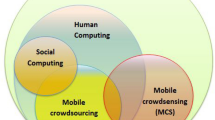Abstract
Area based services enable the provisioning of various useful applications for users of smart and transportable wireless mobile clients in defined geographical areas. Special events are generated if clients change their spatial relations to an area, being used for the triggering of certain push services.
One of the fundamental questions for the provider of an area based service is the expected number of event occurrences. This type of information is essential for a proper dimensioning of the system, i.e. the corresponding access network resources like bandwidth and processing capabilities.
This paper presents an analytical investigation of the problem. We determine the probabilities for mobile clients to enter or leave an area between two consecutive position changes, assuming uniformly distributed user positions and movement directions. Different area sizes and shapes (circular, rectangular and hexagonal) are investigated. Additionally, we evaluate the cases of failed detections, occurring when some clients cross the area in between two successive position updates, and provide some numerical results for different client velocity distributions. The mathematical results have been validated by simulations.
Similar content being viewed by others
References
3rd Generation Partnership Project 2 (3GPP2). Location-Based Services System (LBSS) Stage 1 Description. Technical Report S.R0019 Version 1.0.0, (2000).
C. Bettstetter, Mobility modeling in wireless networks: Categorization, smooth movement, and border effects, SIGMOBILE Mobile Computing and Communications Review 5(3) (2001) 55–66.
C. Bettstetter, H. Hartenstein and X. Pérez-Costa, Stochastic properties of the random waypoint mobility model, Wireless Networks 10(5) (2004) 555–567.
T. Camp, J. Boleng and V. Davies, A survey of mobility models for ad hoc network research, Wireless Communications and Mobile Computing (WCMC): Special issue on Mobile Ad Hoc Networking: Research, Trends and Applications 2(5) (2002) 483–502.
European Telecommunications Standards Institute (ETSI). Universal Mobile Telecommunications System (UMTS); Selection procedures for the choice of radio transmission technologies of the UMTS, Technical Report V3.2.0. (1998).
W. Feller, An Introduction to Probability Theory and its Applications, 3rd edn (John Wiley & Sons, 1968) Vol 1.
S.D. Hermann, G. Schäfer, A. Wolisz and M. Lipka, Concept for the hierarchical and distributed processing of area based triggers, in: Fourth Annual IEEE International Conference on Pervasive Computing and Communications (PerCom) (2006).
D. Hong and S.S. Rappaport, Traffic model and performance analysis for cellular mobile radio telephone systems with prioritized and nonprioritized handoff procedures, IEEE Trans. on Vehicular Technology VT-35(3) (1986) 77–92.
A. Jardosh, E.M. Belding-Royer, K.C. Almeroth and S. Suri, Towards realistic mobility models for mobile ad hoc networks, in: MobiCom (San Diego, CA, 2003).
C. Maihöfer, T. Leinmüller and E. Schoch, Abiding geocast: Time–stable geocast for ad hoc networks, in: Proc. of the 2nd ACM International Workshop on Vehicular ad hoc Networks (VANET ’05), New York, NY, USA. ACM Press. (2005) pp. 20–29.
S. Ross, Introduction to Probability Models, 7th edn (Academic Press, 2000).
J. Schiller and A. Voisard, Location-Based Services. (Morgan Kaufmann Series in Data Management Systems, Morgan Kaufmann, 2004).
M. Schweigel and R. Zhao, Cell residence time in square shaped cells, in: 2nd Polish-German Teletraffic Symposium, Gdansk University of Technology, Poland (2002).
A. Varga, The OMNeT++ Discrete Event Simulation System, in: European Simulation Multiconference (ESM), Prague, Czech Republic (2001).
V.W.-S. Wong and V.C.M. Leung, Location management for next generation personal communication networks, IEEE Network 14 (2000).
H. Xie and D.J. Goodman, Mobility models and biased sampling problem, in: 2nd International Conference Universal Personal Communication (ICUPC’93), Ottawa, Canada. (1993) pp. 804–807.
M.M. Zonoozi and P. Dassanayake, User mobility modeling and characterization of mobility patterns, IEEE Journal on Selected Areas in Communications 15(7) (1997) 1239–1252.
Author information
Authors and Affiliations
Corresponding author
Rights and permissions
About this article
Cite this article
Hermann, S.D., Sortais, M. & Wolisz, A. Utilization analysis of area based push services. Telecommun Syst 33, 215–231 (2006). https://doi.org/10.1007/s11235-006-9012-2
Published:
Issue Date:
DOI: https://doi.org/10.1007/s11235-006-9012-2




